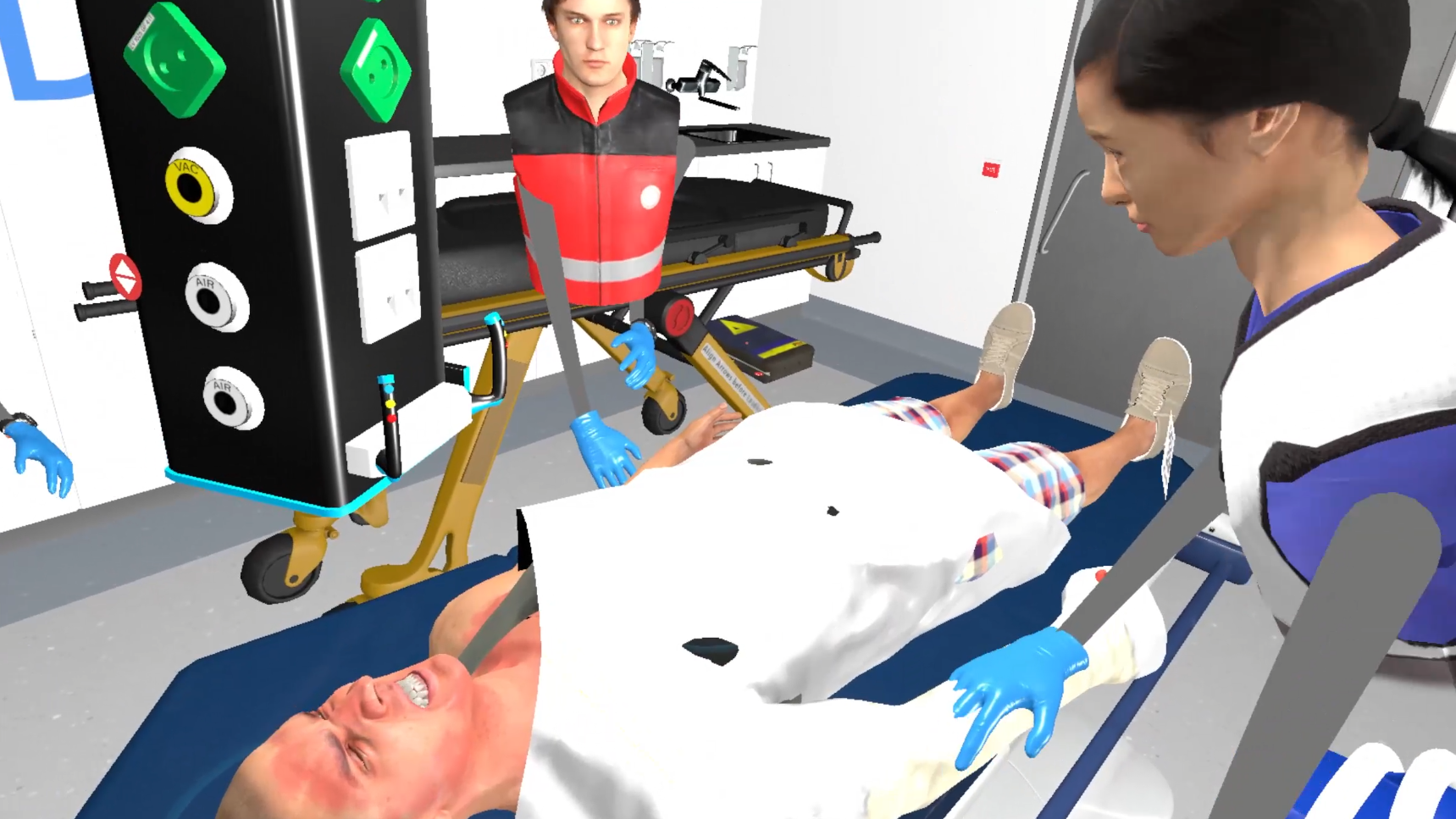The following video shows what a complete training in our simulation environment looks like. The emergency paramedics and emergency nurses can train the scenario from any location. This means that the teams only meet virtually at one point during the training.

The procedure: Familiarisation via a tutorial in the break room, preclinical scenario with a burnt patient, interprofessional handover of the patient in the shock room (remote), further treatment of the patient in the clinical scenario.
First, each team learn the controls in its own virtual break room and complete the first simple tasks. These are displayed on a virtual whiteboard. Tasks are, for example, making coffee, switching on the radio, but also medical treatment can be tried out on the virtual patient. The advantage of such a tutorial is that the participants first get used to the medium of VR and the controls in a playful way, so they are not overwhelmed in the subsequent application scenario. Once all tasks have been completed, the preclinical scenario follows in a garden. The patient has been badly burned in a barbecue accident. The emergency paramedics initiate the initial treatment and then take him to the hospital. In the shock room, both professions work together virtually and remotely. The patient is handed over to the emergency nurses. Here, the "same language" has an important meaning. To support the handover structure according to ATMIST, a virtual poster can be consulted by the trainees. As soon as the handover is completed, the emergency nurses begin further treatment in the clinical scenario.

